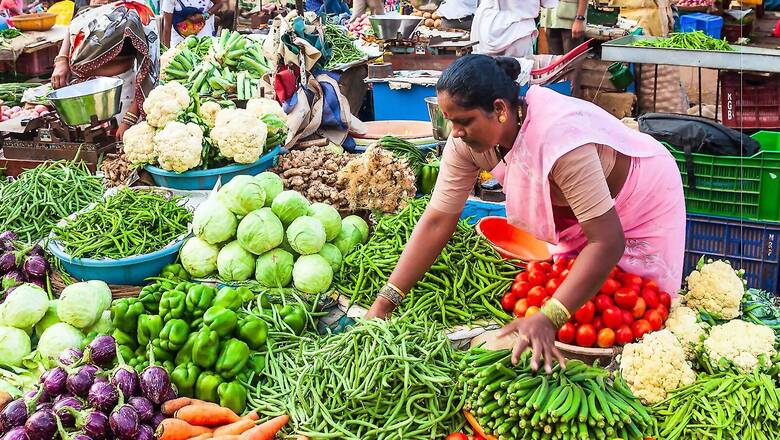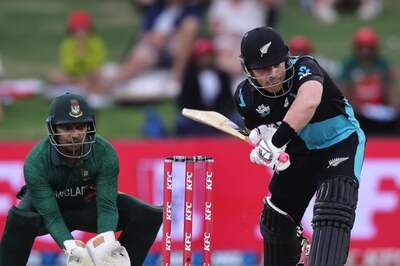
views
Easing for the third month in a row, the retail inflation in India, based on the Consumer Price Index (CPI), declined to 6.71 per cent in July, compared with 7.01 per cent in the previous month. The food inflation in July 2022 also moderated to 6.75 per cent as against 7.75 per cent in June. Also, India’s industrial production in June 2022 grew in double digits, and increased 12.3 per cent on a low base.
However, July is the seventh consecutive month when the retail inflation remained above the RBI’s tolerance range of 2-6 per cent. The retail inflation in June had stood at 7.01 per cent, which was slightly lower than 7.04 per cent in May. Inflation in rural areas in June was at 7.09 per cent during June 2022, while that in urban areas was 6.92 per cent.
According to the latest data released by the National Statistical Office (NSO) on Friday, the price rise in both rural and urban regions saw easing, with inflation in rural areas falling to 6.80 per cent during July 2022, while that in urban areas dropped to 6.49 per cent.
The inflation print in vegetables also decline to 10.9 per cent from 17.37 per cent in June. ‘Pulses and products’, however, see a rise in inflation to 0.18 per cent in July from (-)1.02 per cent in June.
Inflation in ‘cereals and products’ also rose to 6.90 per cent from 5.66 per cent a month ago. The rate of price rise in ‘fuel and light’ increased to 11.76 per cent, compared with 10.39 in June, while that in fruits jumped to 6.41 per cent as against 3.10 per cent in the previous month.
Meanwhile, India’s industrial production in June 2022 increased to 12.3 per cent on a low base. However, it was lower than the 19.6 per cent recorded in the previous month of May and 13.8 per cent in June 2021.
The manufacturing sector’s output in June 2022 grew 12.5 per cent in June 2022. The mining production climbed 7.5 per cent, while power generation saw a jump of 16.4 per cent in June 2022. The index grew 12.7 per cent April-June 2022 compared to a growth of 44.4 per cent in the same period a year ago.
Industrial production has been hit due to the coronavirus pandemic in March 2020, when it had contracted 18.7 per cent. It shrank 57.3 per cent in April 2020 due to a decline in economic activities in the wake of the lockdown imposed to curb the spread of coronavirus infections.
Mohit Ralhan, Global CEO and managing partner at TIW Capital Group, said, “The inflation appears to be easing with CPI coming at 6.71 per cent in July in comparison to 7.01 per cent in June. It looks like the peak of inflation was 7.79 per cent in April and the trend is downwards. Still, as far as inflation is concerned, India is not out of the woods as it remains above 6 per cent now for 7 months.”
Ralhan added that the RBI will be hard pressed to bring the inflation down to below 6 per cent as it will need to submit a report to the government if inflation remains above 6 per cent for one quarter more. The dependency on global factors including energy prices and geopolitical environment is high and RBI is likely to continue increasing interest rates further over the next few months.
“The IIP growth of 12.3 per cent in June is lower than 19.6 per cent in May, it is quite ahead of the estimated 10-11 per cent number. Irrespective of the lower base effect, it indicates that factory output is moving in the right direction and give more headroom to RBI for policy maneuvering,” he added.
Upasna Bhardwaj, chief economist at Kotak Mahindra Bank, said, “CPI headline inflation for July has moderated inline with our expectations led largely by food inflation while the core inflation remains elevated and sticky. The coming few readings are expected to be a tad above 7 per cent with inflation likely to hover above RBIs upper threshold limit of 6 per cent until January 2023. We expect Repo rate at 6 per cent by end of 2022 followed by a pause and a shift to neutral policy stance.”
Read the Latest News and Breaking News here



















Comments
0 comment